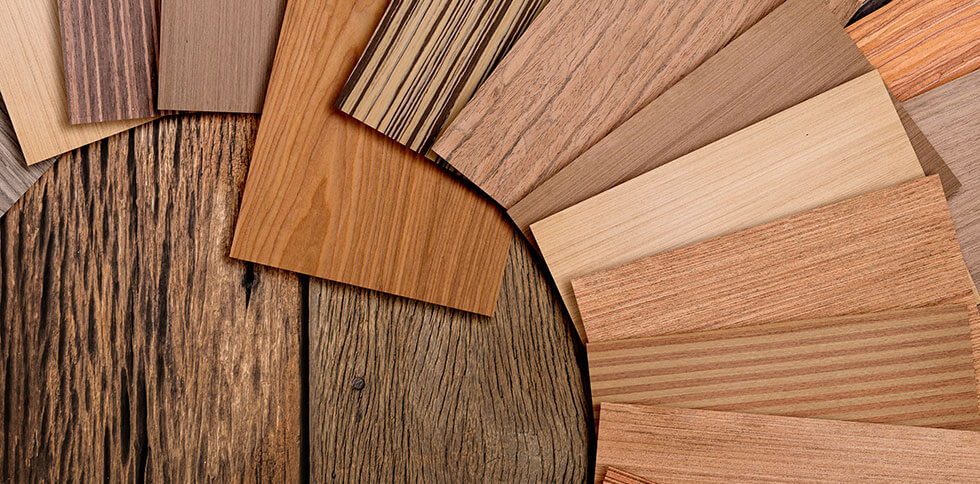Blog

Choosing the Perfect Wood Veneer for Your Interiors
When it comes to creating sophisticated and timeless interiors, wood veneers stand out as an exceptional choice. Offering the natural beauty of solid wood at a fraction of the cost, veneers combine functionality, style, and durability, making them a preferred material for designers, architects, and homeowners alike. In this blog, we’ll explore what makes wood veneers special, the factors to consider when selecting them, and how they can transform your living spaces.
Understanding Wood Veneers and Their Appeal
Wood veneers are thin slices of real wood adhered to a base material like plywood, MDF, or particleboard. They are widely used in furniture, cabinetry, wall paneling, and other interior applications to replicate the premium feel of solid wood without the associated drawbacks like warping or splitting.
What makes veneers especially appealing is their ability to capture the essence of natural wood grains and textures, bringing warmth and elegance to interiors. With a wide variety of finishes, colors, and patterns available, veneers allow for endless customization while maintaining an eco-friendly profile by using less wood than solid alternatives
The growing popularity of veneers can be attributed to their versatility. Whether you want a modern minimalist look or a rich traditional ambiance, there’s a veneer that suits your design vision.
Factors to Consider When Selecting Veneers
Choosing the right wood veneer involves understanding your aesthetic and practical needs. Here are some key factors to guide your decision-making process:
-
Durability and Usage:
Not all veneers are created equal. Some are designed for high-traffic areas like flooring or tabletops, while others are better suited for decorative purposes. Ensure the veneer you choose is durable enough to withstand wear and tear in the intended application.
-
Grain Patterns and Aesthetics:
The natural grain of wood veneers varies widely, from simple straight grains to intricate burl patterns. Straight grains work well in modern, minimalist designs, while figured or burl patterns are ideal for creating statement pieces.
-
Color and Finish:
Veneers come in a range of colors, from light ash and oak to deep walnut and mahogany. The finish—whether matte, semi-gloss, or high-gloss—can further enhance the visual appeal of your interiors. For example, a glossy finish adds a contemporary flair, while a matte finish offers a more subdued, rustic charm.
-
Application Area:
Where you plan to use the veneer matters. For instance, veneers with a natural finish are perfect for living rooms and bedrooms, while laminated or lacquered veneers may be better for kitchens and bathrooms due to their resistance to moisture.
-
Sustainability:
Many veneers today are sourced sustainably, making them a responsible choice for environmentally conscious buyers. Look for certifications like FSC (Forest Stewardship Council) to ensure your veneer is eco-friendly
Benefits of Using Wood Veneers
Wood veneers offer several advantages over solid wood and synthetic materials:
-
Cost-Effective Luxury: Veneers provide the rich look of solid wood at a much lower cost.
-
Eco-Friendly: By using less wood, veneers reduce the environmental impact of your interiors.
-
Versatility: Their adaptability to various surfaces and applications makes veneers suitable for a wide range of interior designs.
-
Stability: Unlike solid wood, veneers are less prone to expansion, contraction, or warping due to changes in temperature and humidity.
-
Customizability: With so many patterns, colors, and finishes available, veneers can be tailored to suit any design aesthetic.
Tips for Maintaining Your Wood Veneers
While wood veneers are relatively low-maintenance, regular care ensures they remain in pristine condition for years to come:
-
Dust Regularly: Use a soft cloth or duster to remove dust and debris, which can dull the finish over time.
-
Avoid Moisture: Excess moisture can damage veneers. Clean spills immediately and avoid using water-based cleaning solutions.
-
Use Mild Cleaners: : For deeper cleaning, use a soft cloth with a gentle wood cleaner. Avoid abrasive materials or harsh chemicals.
-
Polish Occasionally: Applying a wood polish periodically will enhance the veneer’s luster and protect its surface.
-
Prevent Scratches: Use coasters and pads to protect veneered surfaces from scratches or dents caused by heavy or sharp objects.
How Veneers Transform Interiors
Wood veneers are more than just a decorative material—they have the power to elevate the ambiance of any room. From creating cozy home interiors to designing lavish office spaces, veneers add a touch of sophistication and personality.
For example, using a walnut veneer as a feature wall can create a stunning focal point in your living room, while oak veneers on kitchen cabinets exude warmth and elegance. Pairing contrasting veneers in furniture design can also make a bold style statement
Conclusion
Wood veneers are the perfect blend of natural beauty and practicality. By understanding their types, applications, and care requirements, you can make informed decisions that enhance your interiors and reflect your personal style. Whether you’re designing a home, office, or commercial space, veneers offer endless possibilities to achieve the aesthetic you desire.
